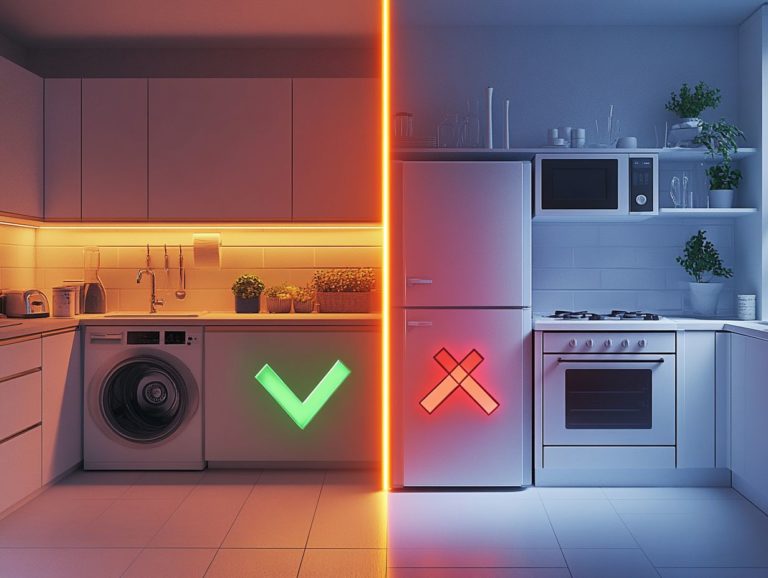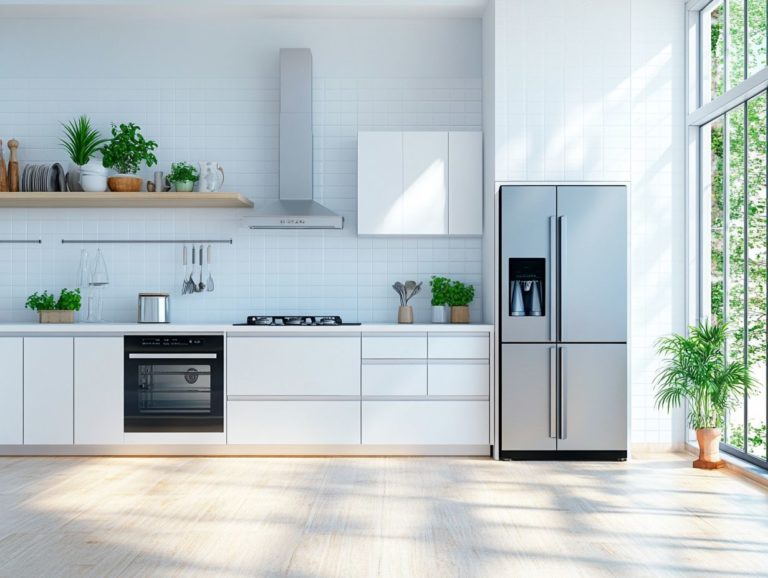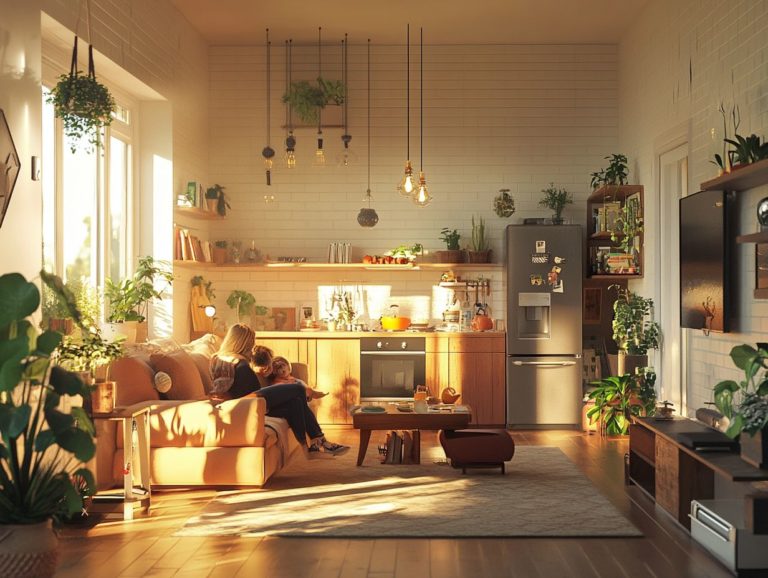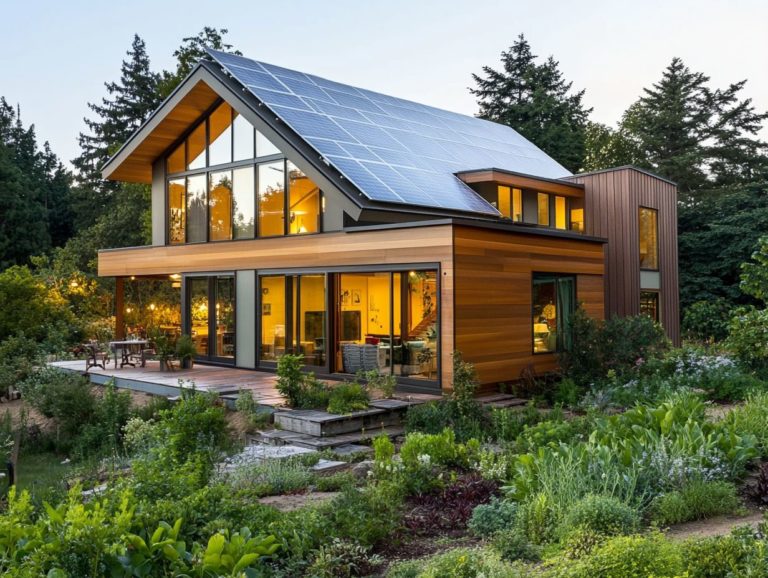7 Energy-Efficient Solutions for Home Cooling
As temperatures climb, keeping your home cool without straining your budget naturally becomes a top concern for you.
Fortunately, a wealth of energy-efficient solutions exists to help you maintain comfort while also trimming your energy bills.
This article delves into seven practical strategies designed to elevate your comfort and champion sustainability.
Uncover how a few simple adjustments can make a remarkable difference in your home s cooling efficiency and lighten the load on your wallet!
Contents
- Key Takeaways:
- 1. Install a Programmable Thermostat
- 2. Use Ceiling Fans Strategically
- 3. Seal and Insulate Your Home Properly
- 4. Plant Trees and Shrubs for Natural Shade
- 5. Consider Energy-Efficient Cooling Systems
- 6. Keep Your Air Conditioner Maintained
- 7. Use Window Treatments to Block Out Heat
- How Does Air Conditioning Impact Energy Usage?
- What Are the Benefits of Using Energy-Efficient Cooling Solutions?
- What Are the Different Types of Energy-Efficient Cooling Systems?
- How Can One Determine the Right Size and Capacity for Their Cooling System?
- What Are Some Other Ways to Reduce Energy Usage for Cooling?
- What Are the Long-Term Cost Savings of Using Energy-Efficient Cooling Solutions?
- Frequently Asked Questions
- What Are the Benefits of Using 7 Energy-Efficient Solutions for Home Cooling?
- What Are Some Common 7 Energy-Efficient Solutions for Home Cooling?
- How Can a Programmable Thermostat Help with Energy-Efficient Home Cooling?
- What Are Some Tips for Sealing Air Leaks in My Home?
- Can Using Ceiling Fans Really Make a Difference in Home Cooling?
- Are There Any Energy-Efficient Cooling Solutions Specifically for Homes in Hot Climates?
Key Takeaways:
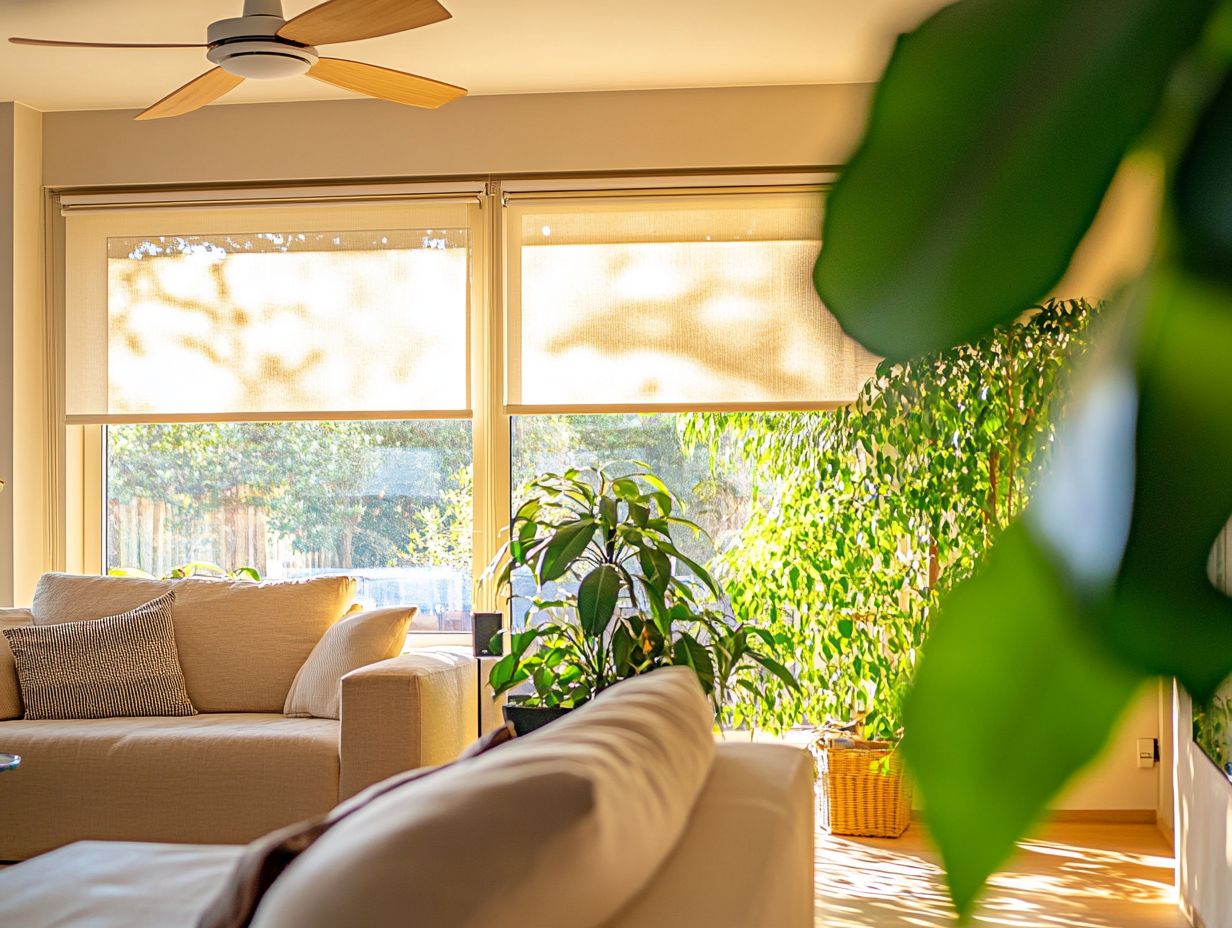
Install a programmable thermostat to save energy and money by automatically adjusting the temperature when you’re away or asleep.
Strategically use ceiling fans to circulate cool air and create a wind chill effect, allowing you to raise the temperature on your thermostat.
Seal and insulate your home properly to prevent cool air from escaping and hot air from entering, making your cooling system more efficient.
1. Install a Programmable Thermostat
Installing a programmable thermostat can truly improve your home’s energy efficiency, especially during those hot summer months in New England, where temperatures often soar beyond comfort.
With the latest advancements in technology, these smart thermostats enable you to create customized schedules that optimize your HVAC system’s performance, leading to both energy savings and a consistently comfortable indoor environment.
These devices are crafted to learn your heating and cooling preferences over time, adapting seamlessly to whether anyone is home, thanks to features like geofencing. This means your thermostat can sense when you re nearing your house and adjust the temperature accordingly, ensuring a pleasant welcome while sidestepping unnecessary energy consumption.
The ability to control settings remotely via smartphone apps offers you unparalleled convenience, allowing you to tweak your home’s climate even from miles away.
Using this technology can save you money, making it a savvy choice for homeowners eager to reduce their energy bills and minimize their carbon footprint.
2. Use Ceiling Fans Strategically
Utilizing ceiling fans strategically during the summer heat in New England can transform your home into a refreshing haven, enhancing your cooling methods without drastically inflating your energy bills.
By circulating cool air downwards, ceiling fans create an environment that feels several degrees cooler, allowing you to set your air conditioning a few degrees higher without sacrificing comfort.
In winter, simply reversing the fan direction pushes warm air down from the ceiling, ensuring that heat is evenly distributed throughout the room. This clever dual functionality not only aids in temperature regulation but also promotes better indoor air quality by preventing stagnant air, effectively reducing allergens and enhancing your overall comfort levels.
By incorporating ceiling fans into your climate control strategy, you can boost your home’s comfort and enjoy a more affordable energy bill!
3. Seal and Insulate Your Home Properly
Proper sealing and insulation are crucial for maintaining an energy-efficient home, especially in New England, where both summer and winter temperatures can drive energy costs through the roof if not managed effectively.
It’s important for you to understand the various types of insulation available like fiberglass, cellulose, and spray foam since each comes with its own R-Values. R-Values measure how well insulation resists heat. A higher R-Value means better insulation, which can lower your utility bills.
You should also give air sealing techniques some thought to minimize air leakage, as those pesky drafts can undermine the advantages of even the most effective insulation.
By prioritizing both insulation and air sealing, you can significantly boost your home’s comfort, ensuring a stable indoor temperature and cutting down on energy waste all year round.
Start implementing these strategies today to experience immediate comfort and savings!
4. Plant Trees and Shrubs for Natural Shade
Planting the right trees and shrubs can create a natural canopy, blocking the sun’s rays and keeping your home cool during hot summers. This greenery not only boosts your energy savings but also improves outdoor air quality.
By effectively blocking the sun s rays, these plants can significantly lower indoor temperatures, allowing you to enjoy a more comfortable living space without relying entirely on air conditioning. Certain plants can help keep pests at bay naturally, reducing your need for chemical repellents.
Choose the right species for your climate and consider their mature size when deciding where to place them. Positioning larger trees to the west or south of your home provides optimal shade during peak sun hours, while smaller shrubs can fill in gaps and enhance your landscape’s overall aesthetic.
5. Consider Energy-Efficient Cooling Systems
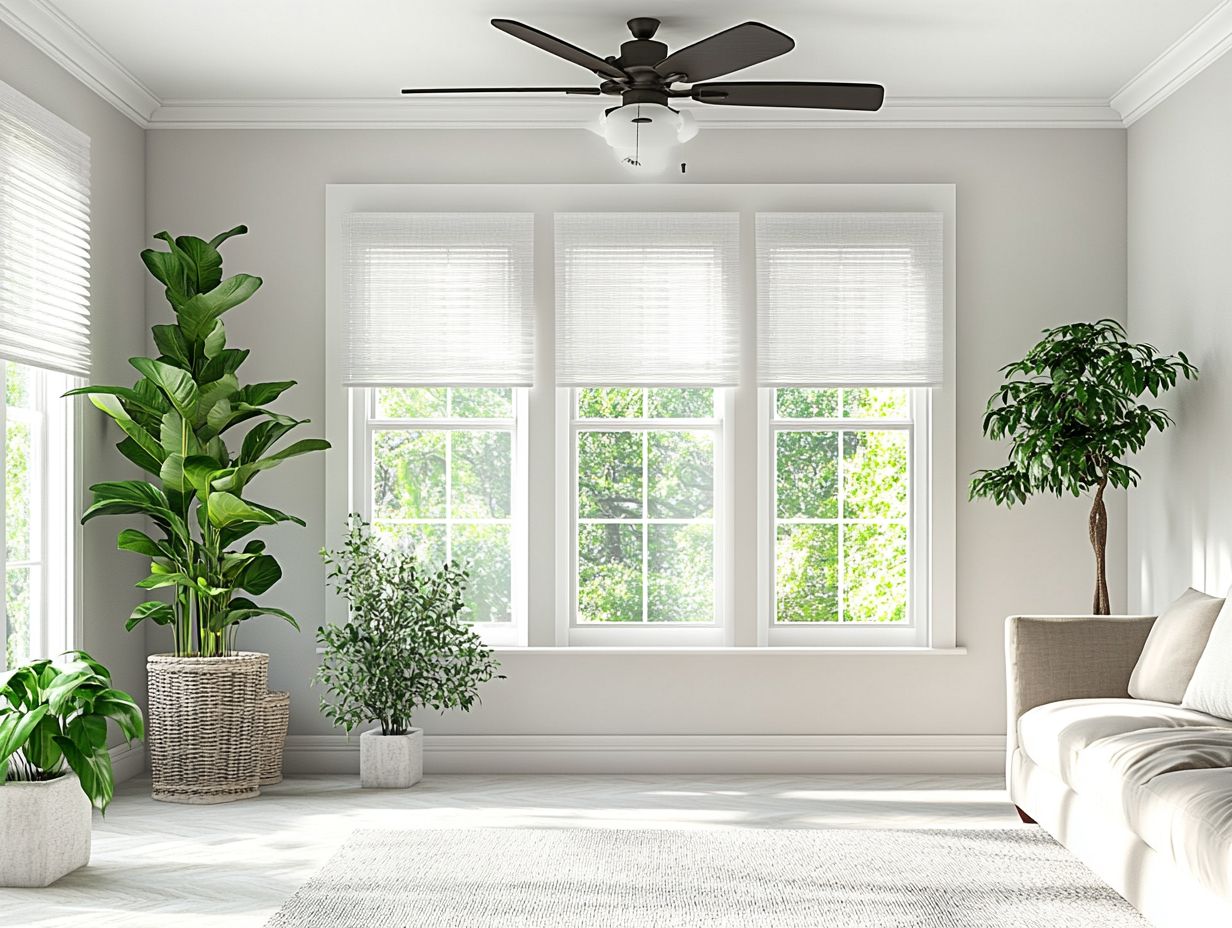
Considering energy-efficient cooling systems like ductless mini-split systems can significantly elevate your home s indoor air quality while managing temperatures during New England’s hot summer heat. These systems directly cool specific zones, eliminating the energy loss seen in traditional systems that use ductwork.
Unlike conventional systems that rely on ductwork which often leaks air and diminishes efficiency mini-splits are designed to deliver cool air precisely where you need it. This approach reduces energy waste and provides customizable temperature settings in various rooms, enhancing your overall comfort.
With their whisper-quiet operation and sleek design, these systems suit both urban apartments and suburban homes, blending functionality with sophisticated style.
6. Keep Your Air Conditioner Maintained
Regularly maintaining your air conditioning units keeps you cool while saving on long-term heating and cooling costs. By tackling routine tasks like changing filters and conducting system checks, you can boost the efficiency of your cooling systems.
Cleaning air filters allows for better airflow and prevents your unit from overworking, which ultimately curbs energy consumption. Regular inspections can catch minor issues before they become major headaches, saving you from costly repairs.
Don t wait for your system to fail regular maintenance can save you money and keep your home comfortable!
7. Use Window Treatments to Block Out Heat
Using window treatments like thermal curtains and reflective blinds can greatly reduce summer heat in New England. These treatments serve as barriers, minimizing heat that enters your home and decreasing your reliance on air conditioning.
For instance, thermal curtains trap air between their fabric layers, creating an insulating effect, while reflective blinds bounce sunlight away, preventing the room from overheating. Combining these treatments with other cooling strategies like ceiling fans or smart thermostats significantly elevates your home s comfort level.
This clever synergy helps maintain a stable indoor temperature and ultimately lowers your energy bills, making it a win-win for anyone looking to optimize their living space.
Act now to implement these solutions for a more comfortable and energy-efficient home!
How Does Air Conditioning Impact Energy Usage?
Air conditioning plays a crucial role in managing energy consumption in your home, especially during the sweltering summer months in New England.
As you rely more on Heating, Ventilation, and Air Conditioning (HVAC) systems, energy use can skyrocket, leading to hefty utility bills if not handled with care. Understanding how these systems work is vital for homeowners aiming to maintain comfort while keeping costs low.
At its essence, an air conditioning unit functions by circulating refrigerant through various components that absorb and release heat. This is the way it works: it cools the air inside your home while pushing warmth outside.
Not all systems are equally efficient, so it s worth exploring energy-efficient options like inverter technology or smart thermostats.
These innovations help optimize performance based on your usage patterns, allowing you to make the most of your system. By assessing these alternatives, you can significantly lower your electricity consumption, leading to reduced utility bills and a smaller carbon footprint.
What Are the Benefits of Using Energy-Efficient Cooling Solutions?
Embracing energy-efficient cooling solutions brings a wealth of advantages, including substantial energy savings, enhanced indoor air quality, and long-term cost reductions. This makes them an astute choice for New England homeowners.
These cutting-edge systems can slash energy consumption by up to 30%, resulting in noticeably lower utility bills an undeniable relief when those monthly expenses roll around.
You ll likely experience improved comfort levels, thanks to more consistent temperatures that eliminate frustrating hot spots often found with traditional units. For example, a local resident reported a remarkable 25% decrease in their annual energy costs after upgrading to an energy-efficient model. Another homeowner noted how the quieter operation transformed their living space into a peaceful retreat.
Statistics reveal that homes utilizing energy-efficient cooling not only contribute to a greener planet but also see their property values rise over time.
What Are the Different Types of Energy-Efficient Cooling Systems?
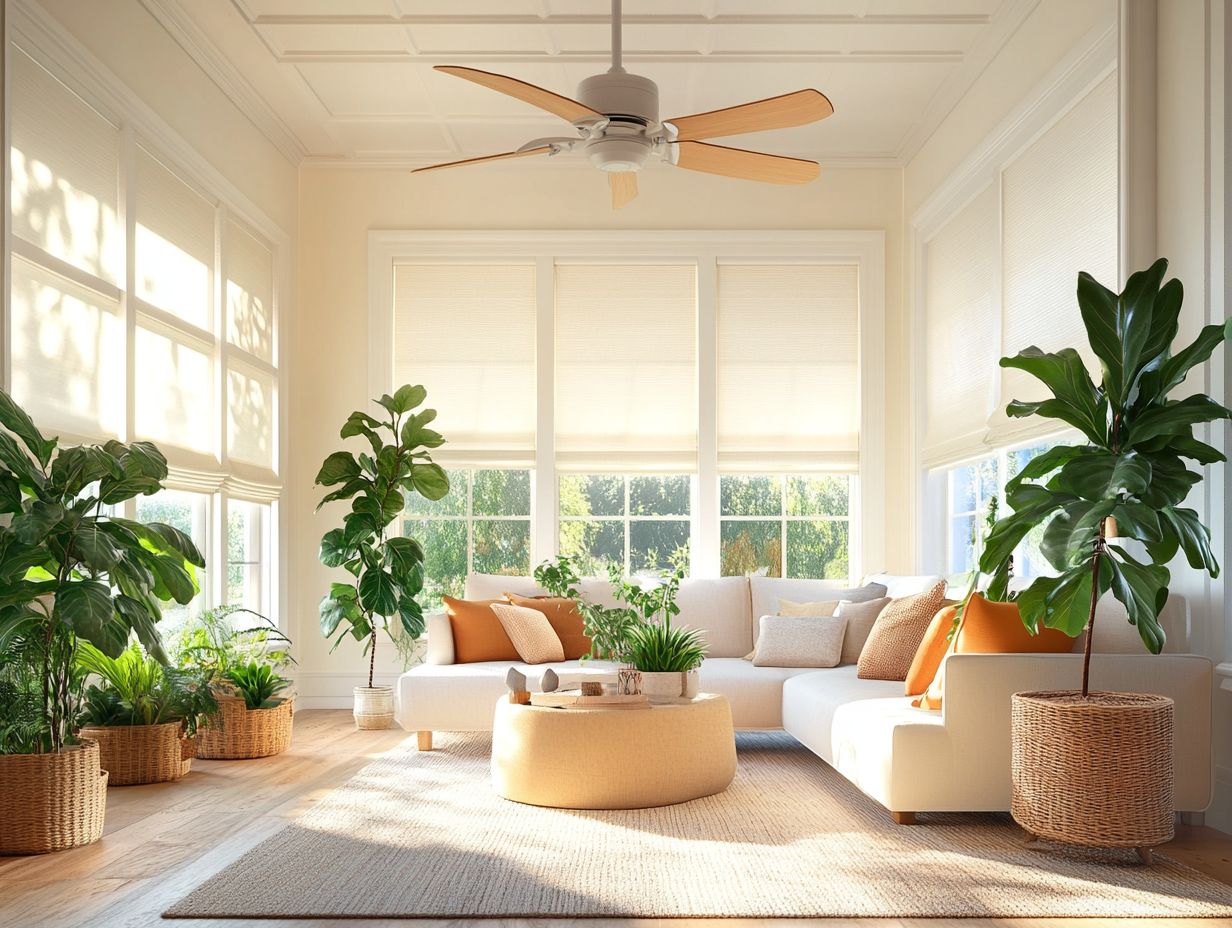
You have a variety of energy-efficient cooling systems at your disposal, from ductless air conditioning and mini-split systems to portable units. Each option offers distinct advantages for homeowners like you who seek both comfort and reduced energy consumption.
Ductless air conditioning systems provide flexibility, making them perfect for homes without existing ductwork ideal for older residences. Mini-split systems allow you to efficiently cool specific zones or rooms, enhancing your overall energy savings.
If you’re on a tighter budget, portable units present a practical solution with minimal installation requirements, enabling easy movement for targeted cooling in different spaces.
Each option comes with its own installation needs, from professional setup for fixed systems to simple plug-and-play models, ensuring that no matter your home layout, you can find an efficient solution tailored to your requirements.
How Can One Determine the Right Size and Capacity for Their Cooling System?
Determining the right size and capacity for your cooling system is essential for achieving optimal temperature control and maximizing energy savings. An HVAC system that s too large or too small can lead to inefficiencies and inflated energy costs.
To accurately calculate the appropriate size, consider the total square footage of your home, along with typical airflow requirements and insulation levels. A common method is to calculate the BTU (British Thermal Units, which measure heat energy) required per square foot, while also factoring in the number of windows, their orientation, and ceiling height, as these aspects significantly influence heat gain or loss.
Steering clear of common sizing mistakes is crucial. Failing to account for air leaks or relying solely on rule-of-thumb estimates instead of performing manual calculations can lead to costly oversights. By addressing these considerations, you can ensure your cooling system operates efficiently, maintaining comfort while avoiding unnecessary expenses.
Explore energy-efficient solutions for your home now!
What Are Some Other Ways to Reduce Energy Usage for Cooling?
Beyond upgrading cooling systems, you can use several practical strategies to effectively reduce energy consumption for cooling in New England. Consider air sealing, improving insulation, and using smart thermostats to manage your energy use proactively.
For instance, implementing weather stripping around your windows and doors can minimize air leaks. This ensures that the cool air stays inside during the hot summer months. You can explore natural ventilation by strategically opening windows to create cross-breezes, allowing you to cool your interiors without relying solely on mechanical systems.
A fascinating case study from Massachusetts showed significant savings when homeowners utilized programmable schedules for their heating, ventilation, and air conditioning (HVAC) systems. By aligning cooling needs with occupancy patterns, they slashed their energy bills and embraced a more sustainable lifestyle.
This shows that individual actions can significantly lower energy use, proving that every little bit counts.
What Are the Long-Term Cost Savings of Using Energy-Efficient Cooling Solutions?
Investing in energy-efficient cooling solutions can lead to substantial long-term cost savings. Reducing energy consumption translates to lower utility bills and decreased maintenance expenses over the lifespan of your HVAC systems.
By opting for these advanced solutions, homeowners and businesses can take advantage of various financial incentives, like rebates from organizations such as Mass Save or NEEECO. These programs help offset your initial investment and promote the adoption of greener technologies.
When assessing the overall financial impact, don t forget to consider how much you ll save now and in the future. The reduced operational costs can significantly lower your total expenditure.
Ultimately, this strategy supports your budget and contributes positively to environmental sustainability.
Frequently Asked Questions
What Are the Benefits of Using 7 Energy-Efficient Solutions for Home Cooling?
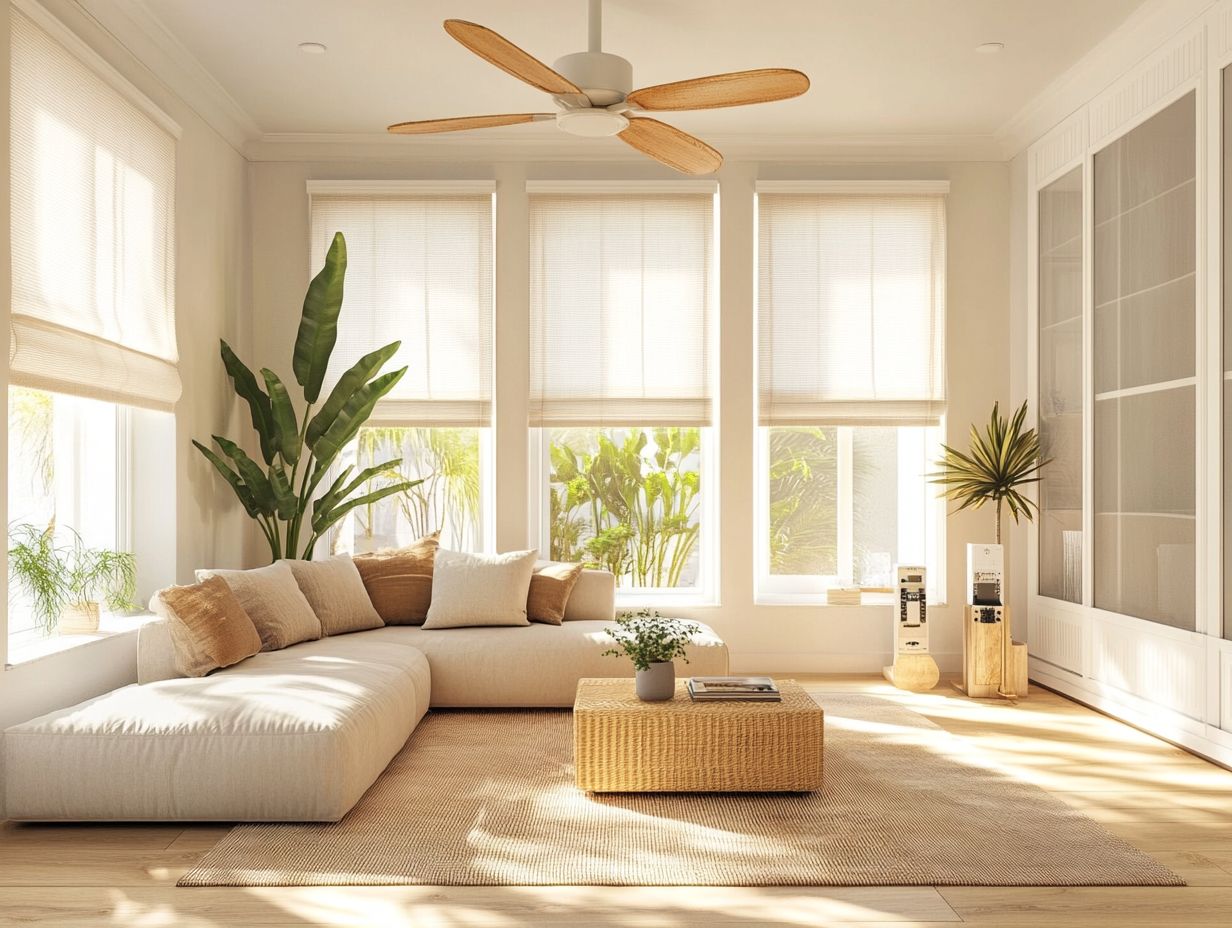
By implementing these solutions, you can save money on your energy bills, reduce your carbon footprint, and create a more comfortable living environment.
What Are Some Common 7 Energy-Efficient Solutions for Home Cooling?
Some common solutions include using a programmable thermostat, sealing air leaks, and installing ceiling fans.
How Can a Programmable Thermostat Help with Energy-Efficient Home Cooling?
A programmable thermostat allows you to set specific temperatures for different times of the day. This way, your cooling system doesn’t have to work as hard when you’re not at home or at night.
What Are Some Tips for Sealing Air Leaks in My Home?
You can caulk or weatherstrip windows and doors, add insulation to your attic and walls, and seal any gaps or cracks around pipes and wires.
Can Using Ceiling Fans Really Make a Difference in Home Cooling?
Yes, ceiling fans can help circulate cool air and make your home feel more comfortable without needing to turn down the thermostat.
Are There Any Energy-Efficient Cooling Solutions Specifically for Homes in Hot Climates?
Yes, installing a radiant barrier in your attic, using window films to block out heat, and planting shade trees around your home can help keep your home cool in hot climates.
Start implementing these solutions today to enjoy a more comfortable and cost-effective home!



